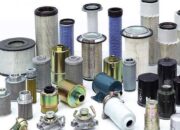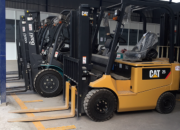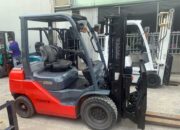What is Reach truck? Address to rent and buy cheap prestigious Reachtruck forklifts
Reach trucks are forklifts used in warehouses and factories to move goods from one place to another. The name “Reach truck” comes from its ability to “reach” to high and narrow locations to pick up or place goods. It is considered one of the best forklifts for use in warehouses with narrow and tall spaces.
The Reach truck is designed with a long and 360-degree rotating boom, making it easy to move goods from the middle of the warehouse to the corners. It can also pick up goods from the upper floors such as the upper floors in the warehouse, which saves time and energy for moving goods.
The main components of a Reach truck include: fork, handlebars, engine, transmission and controls. It can use electricity, diesel, gas or gasoline to power the operation.
Reach trucks can also be equipped with features such as safety systems, control systems and screens that display information on operating status and loads. This helps the user to easily control and adjust the operation of the forklift, increasing safety and efficiency.
In addition, Reach trucks can be customized with other features such as roll count counters, activity logging systems and load managers to help with inventory and production management. done easily and efficiently.
In summary, Reach truck is one of the important and effective tools in moving goods in warehouses and factories. It saves time and energy, increases safety and operational efficiency, and makes warehouse and production management easier. If you are looking for a good tool to move goods in your warehouse, consider using a Reach truck.
Some popular reach trucks include:
– Electric Reach truck: Using electricity to operate, this type of vehicle can operate in the internal environment and has high speed, improving operational efficiency and energy saving.
– Reach truck with internal combustion engine: Using gasoline, diesel, and gas fuel to operate, this vehicle can operate in outdoor environments and has the ability to transport larger loads than other types of forklift trucks. other forklifts.
Fixed Reach Truck: Can be attached to a specific area in a warehouse or factory, this vehicle can operate in a specific area and has the ability to switch between different load values.
– Two-wheeled Reach truck: Using two wheels to operate, this type of truck can operate in a number of different environments and has the ability to switch between different load values.
In addition, Reach trucks can be customized with a number of options such as storage compartment design, crane height, vehicle width and the maximum load it can handle. To choose the right Reach truck, users need to consider the requirements of the job and the operating environment.
Reach trucks can also be customized with a number of features such as a safety protection system, a total management system for transportation operations and a total management system for resources.
Overall, the reach truck is one of the key transportation devices for many businesses as it provides the ability to efficiently and safely transport loads in storage and production environments. Choosing a reach truck that fits the requirements of the job and the environment will help increase efficiency and reduce costs for your business.
Notes on using reachtruck
When using a Reach truck, there are some important notes that users need to pay attention to:
– Operators must be trained: Only persons who have been trained in the safe use of Reach trucks are authorized to use this equipment.
– Check the status before use: Before starting to use, the user needs to check the status of the forklift and associated equipment to ensure that all is in good working order.
– Use according to safety regulations: Users need to follow the safety regulations and manufacturer’s policies regarding the use of Reach trucks.
Use with Attention: When using Reach trucks, users need to be focused and attentive to safety hazards and procedures.
– Store the forklift correctly: After use, users need to store the Reach truck correctly to ensure the good operation of the equipment and a longer life.
Perform periodic maintenance: Reach trucks need periodic maintenance to ensure that all equipment is in good working order and safe to use.
– Use Genuine Accessories and Parts: When using Reach trucks, users need to use only genuine accessories and components to ensure the best safety and performance.
– Use with responsibility: When using Reach truck, users need to be responsible







